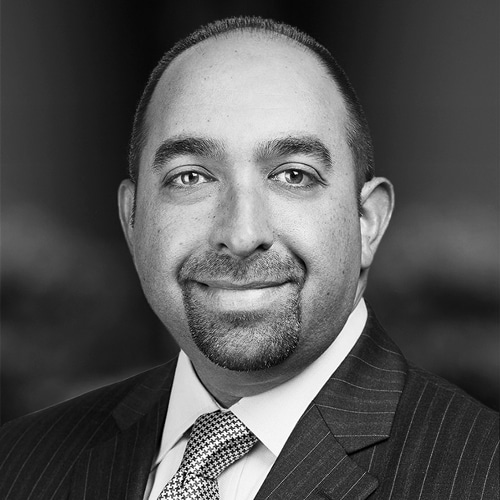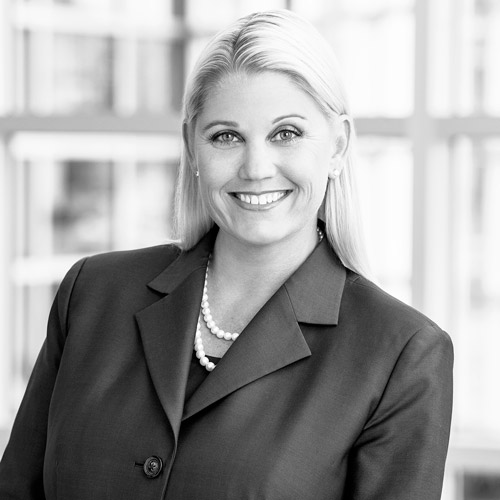When Jonathon Kellerman joined leading global pharmaceutical company Allergan as executive vice president and global chief compliance officer in late 2014, the company was in the early stages of integrating three companies—legacy Actavis, legacy Forest, and legacy Allergan. As part of this effort, Kellerman was faced with the challenge of integrating and enhancing the best of the three legacy compliance programs into a new, leading-edge Global Compliance function—one that would be more efficient, more effective, and more impactful to the customers the company supports.

“That first year, we really focused on identifying the best parts of the legacy company compliance programs—its people, programs, systems, and processes—then quickly and effectively integrating these parts into a stronger, centralized global business partner with improved, more useful, more impactful systems and resources,” Kellerman says. “When you bring together multiple companies, there are real differences that need to be addressed, including cultural, business operations, as well as geographic differences.”
Kellerman and his leadership team studied those legacy systems, kept what worked, and improved on what didn’t for the new combined company. They made sure to retain top talent and align them with Allergan’s “bold” culture, and brought in some new people in areas they felt weren’t optimal to support the business. Ultimately, Kellerman built a team that embraced the core values and vision for compliance that was instilled in him by mentors like CEO Brent Saunders.
“We start with the premise that we hire the best people in the industry, that we train them well, and offer them cutting-edge resources and tools. We empower our people to make smart decisions and, most importantly, we trust our people,” Kellerman says. “This trust is critical to our success. When we empower and trust our people, they want to take ownership, not only for results, but for how we get our results.”
Moving into 2016, the team’s focus shifted to implementing and continuously improving the centralized global program they had created. The company had completed two corporate-integrity agreements at the end of the previous year. This put Kellerman and his leadership team in a position to work with its business partners to decide what would be the most impactful way to deliver compliance. For Kellerman, that meant being strategic, creative, and forward-thinking while syncing the department’s practices with the vision and culture of a bold growth pharma company.
“Now we’re looking at our program, component by component, and deciding how we want policies, processes, and systems to be different,” Kellerman says about the department’s current outlook. “How can we make them more user friendly, accessible, and impactful. We want to develop policies, processes, and systems that are more useful to the business, and that allow our business leaders to be more nimble, quick, and responsive to the needs of our customers.”
Kellerman came to Allergan from PricewaterhouseCoopers (PwC), where he was a partner who helped lead the firm’s global compliance and risk management for the pharmaceutical and life science sector. While his current role is his first job in the private industry, he says that he relies a lot on his past experience in addressing the challenges Allergan faces. During his time with PwC, he worked closely with senior executives and compliance professionals to help them address their most complex compliance strategies and operational challenges. He’s worked with the regulators and has been a leader on deferred prosecution and other settlement agreements with clients.
“Every day I ask myself and challenge my team, ‘How can we deliver compliance with the business that is more creative, more forward looking, more impactful?’”
“I have spent the better part of my professional life in pharmaceuticals and life sciences,” Kellerman says. “The main difference is that now I’m dedicating myself to one company and every aspect of our risk management and compliance challenges from strategy through execution to continuous improvement. Every day I ask myself and challenge my team, ‘How can we deliver compliance with the business that is more creative, more forward looking, more impactful?’”
One of Kellerman’s first accomplishments at Allergan has been the restructuring and realignment of the department in a way that mirrors the company’s operating model. The Global Compliance organization was built on the principle of flexibility, given the dynamic nature of the company. Regardless of the changes that occur, the global function has two core components that are nimble to flex and change as the company grows—customer-facing advisory support aligned to the business units and a centralized, global operations function that builds tools, resources, templates, data, etc., and deploys them through the customer-facing functions into and with the business. Standards and policies, training, monitoring, auditing, investigations, and transparency are now all centralized in this compliance operations hub. The hub creates tools, resources, and guidelines for the business to more efficiently and effectively manage risk while still delivering on their business objectives quickly and boldly.
Allergan is a leader in a new industry category—growth pharma—powered by a commitment to growth, a focus on therapeutic area leadership, a dedication to operational excellence, investment in R&D innovation, and a strong focus on its customers. Kellerman says that the key to staying in the lead in this category is customer intimacy. This is another area where Kellerman takes his lead from Saunders. Everyone in the business, including the CEO, all the members of the CEO’s executive leadership team, and all levels of business management, spend significant time face to face with customers on a regular basis. Everyone on Kellerman’s team is required to have at least one customer engagement activity every quarter, whether it be riding with a sales representative in the field, attending a speaker program, participating in speaker training, or attending medical conferences.
By actively listening to their customers and business partners, Kellerman and his global team are better positioned to represent the voice and perspective of their colleagues as they address compliance matters and controls. “We do that to find out what our customers need, what their challenges are, and how we can better help them deliver health care to their patients in the best way,” Kellerman explains. “It translates into therapeutic-area leadership, which helps drive our commercial success.”
To maintain its position as an industry leader, Allergan practices what it calls “living bold.” This culture embraces five principles: building bridges, powering ideas, acting fast, driving results, and always doing what is right. Kellerman and his leadership team create compliance strategies, systems, and programs that embody this culture.
“As opposed to being a back-room function that primarily creates policies and performs audits, my teams are aligned with the business units and are in the field with them on a daily basis,” Kellerman says. “We advise in real time and proactively collaborate in strategy and planning meetings so our businesses can come up with innovative ideas, act fast, and quickly drive results.”
For example, Kellerman and his leadership team have simplified the company’s approach to policies and standards. Rather than rigid, draconian policies coming through in an unproductive way, the Global Compliance team creates broader corporate policies and standards that establishes a minimum requirement for the compliance control environment, and then relies on the businesses and local countries to tailor these in a manner that are most applicable to them. “We define the necessary guardrails and then help our business partners effectively navigate within those guardrails in a compliant way,” he says.
“Perhaps our biggest opportunity is delivering and managing compliance in a time of change,” Kellerman says. “And I stress ‘opportunity’ versus ‘challenge,’ even though many people would expect dynamic change to be more of a challenge. My leadership team and I embrace dynamic change. We see this as a way to encourage more collaboration, creative thinking and communication. Dynamic change necessitates that Global Compliance be engaged early at the strategy and planning stages, not just advising through or even after execution. We must think differently about how we delivery compliance with impact. It’s truly how we differentiate ourselves from our peers.”
Moving forward, Kellerman says his team will continue to go through each component of its effective compliance program to find ways to better leverage data and technology so that more of the company’s compliance oversight, insight, and advice will be delivered in real time and based upon relevant, meaningful data. They are taking compliance challenges that have actually occurred and turning them into reality-based training tools. The team is also developing a data analytics compliance monitoring system designed to leverage predictive analytics as a way to proactively and directionally target risk and align resources in a smart, productive way to ultimately mitigate risk rather than just react to issues.
“My team knows that I am a bit of a compliance geek when it comes to our work. It’s extremely exciting from a strategic perspective, because it allows us to become a more valuable partner to the colleagues who run the businesses,” Kellerman says. “We’ve always had strong, productive, and active strategies—and we always will. By continuously challenging the status quo, asking ourselves how we can do things differently, and ultimately advancing our compliance program, we will make a meaningful contribution to helping the company be bold, act fast, and power ideas.”














